There is no deficiency in subjects to discuss across the healthcare industry, but one of the loudest dialogues drawing our attention is healthcare consumerization. Consumer expectations change the medical landscape. We can see it by how rapidly healthcare providers are adopting new technologies to win customers and make them loyal.
The rise of health awareness and wellness lifestyle popularity stimulates healthcare consumerization. People want to make sure they are healthy today to avoid becoming a patient tomorrow. Not only millennials, who were born with digital technologies at their fingertips, but generations of all ages go online.
In 2022, 38% of the American population turned to telehealth apps, and by 2025 this number will grow and reach 43%.
The patient-centric approach has become a focal point on the horizon of customer care optimization. It lends a hand in meeting the preferences and needs of today’s digital-savvy audience.
Following the behavioral changes, healthcare software development companies and medical organizations offer telemedicine services, virtual nursing assistants, remote monitoring apps, and omnichannel scheduling solutions, to name a few.
User-Driven Approach
Watch our webinar and learn the top ways of reducing poor user satisfaction, low adoption rates, and decreased loyalty.
Before jumping to the ideas and tech solutions to gratify patients’ requirements, let’s find out more about consumer trends in healthcare, what stands behind them, and how they prompt a shift in paradigms.
Shifting Preferences in Healthcare Consumerization
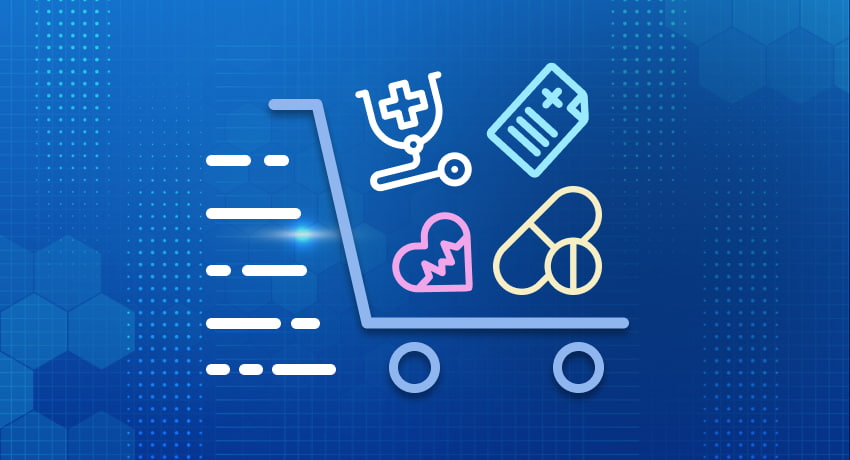
Higher Expectations
Having become sophisticated and digital-driven consumers, patients seek retail-like customer experience and high quality of medical service. They are armed with almost endless online information and tools, leaving fewer chances to the providers that have not sufficiently adapted their services or succeeded in aligning them with patient preferences.
As wellness keeps being one of the most popular trends that draws attention of many people, it greatly affects healthcare consumer expectations. People take care of their wellbeing and pay more attention to how they live, what they eat, and what kind of treatment and medicine they want to obtain.
Rising Healthcare Costs
Another big driver in healthcare consumerization is high-deductible health plans. If you have to pay more out of your pocket, you likely become more price-sensitive and carefully evaluate all the options based on convenience, transparency in costs, or quality level. This invariably impacts how patients choose a provider relying on the ones that deliver a patient-centric approach.
Read more: What Providers Must Know about Patient-Centric Healthcare
While taking the driver’s seat of healthcare, patients are still poorly equipped with the map that would guide them around the intricate health systems and procedures. Increasingly, they turn to retail outlets like CVS, Walmart, or Target, and urgent clinics where they are offered on-demand access to healthcare and more feasible payment scenarios.
Enhanced Access to Technology
The role of technologies in patients’ decision-making is significant. A variety of software solutions and mobile health applications make it possible to provide complex treatment even outside the hospital walls.
Steadily, patients become habituated to virtual consultancy, online appointment scheduling or symptom checking. This change in healthcare consumption and improved access to information shaped a new space for digital tools and innovations, empowering all stakeholders.
Watch this Cleveland Clinic YouTube video where panelists talk about patient engagement with providers across the care continuum:
You probably want to know what tech solutions can help keep up with patients’ expectations and what you can do to make medical services more affordable, accessible, and personalized. Here are some ideas to think about.
Top Solutions to Meet the Demands of Healthcare Consumerization
1. Virtual Consultations
Covering the breaches of healthcare delivery in rural areas and matching the habits of millennials to get things done online, telemedicine is a prosperous solution for delivering certain health services. It can often replace in-person visits and handle a simple ailment as well as enable collaboration between providers.
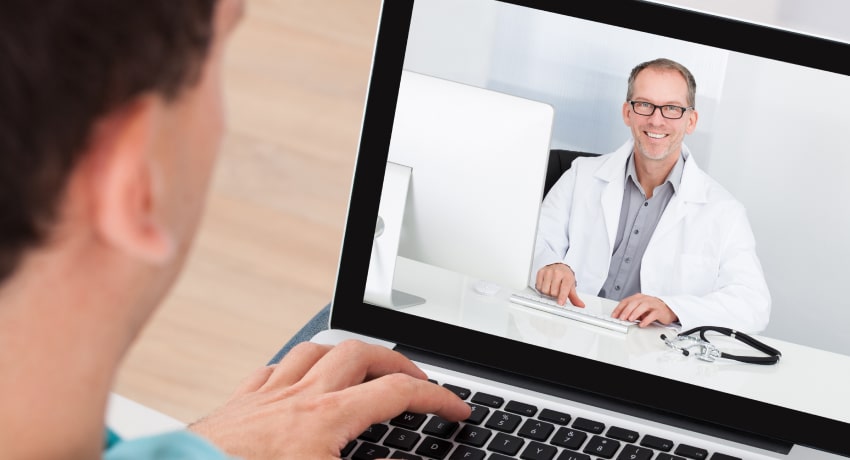
While some clinics provide free hotlines for patients to offer medical advice, others dip their toes into electronic consultations that go hand in hand with video conference technologies. It allows doctors and patients to communicate in real-time.
The proliferation of Internet technologies among the older generation facilitates and popularizes the spread of telemedicine across groups of all ages. This interactive medicine is apt to blur the line between patient wellness and traditional medicine. Personalization of care, better access to doctors, saved time, and less expenses – that is what patients need and that is exactly what consumerization of healthcare is supposed to drive.
Get inspired: How a Medical Assistance App Has Increased Patient Engagement
2. Remote Monitoring
Another option for homebound patients, and those who have busy lives or opt for high quality and convenience, is Remote Patient Monitoring.
A great variety of apps enables chronic disease treatment and medication management. For instance, a diabetes patient can be reminded of insulin intake via a voice application. Or, a patient with hyper- or hypotension can use digital blood pressure cuffs, sending pulse and blood pressure data to a PCP. All this without leaving home.
Read more: How to Improve Your Post-Acute Health Care Services
Internet of Things medical devices and AI-enabled systems working shoulder to shoulder with custom healthcare software solutions broaden the opportunities of RPM applications. They provide patients with more control in managing their health and enhance provider’s decision-making powers. Furthermore, this approach transforms reactive healthcare into proactive.
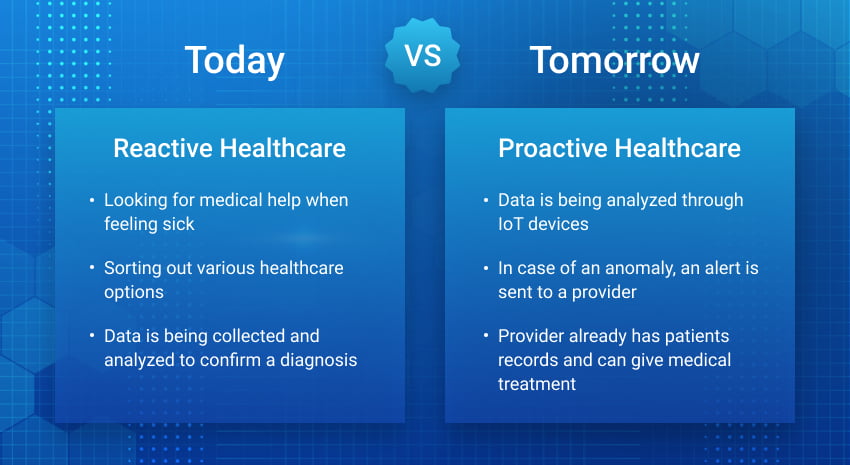
3. Fast And Easy Scheduling
No one wants to spend hours on the phone while booking an appointment – going through phone prompts, being on hold, and figuring out which doctor suits them the best. When you feel unwell, the first thing you might want is to receive help in the fastest and most efficient way.
An automated scheduling solution is a convenient option to set up appointments. Unlike in-person visits, phone calls, or emails, it streamlines interactions between providers and patients by adding accessibility, transparency, and simplicity. Another benefit is resource planning optimization.
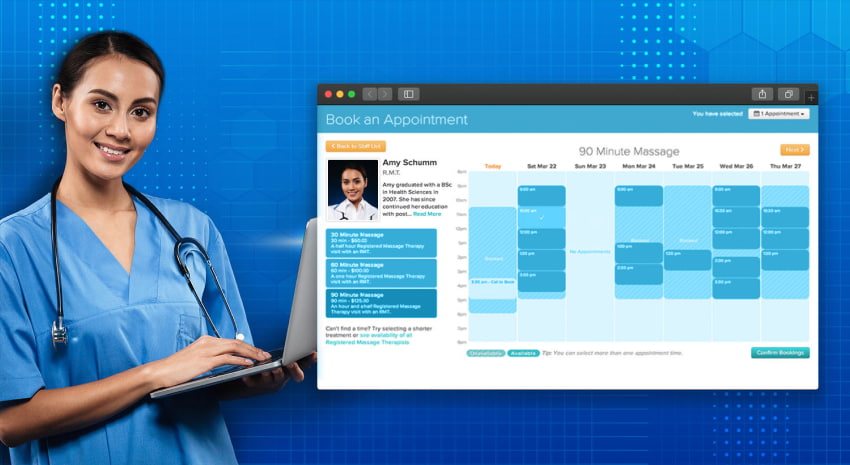
Real-time scheduling data drives down the chances of over- or understaffing issues. Getting staffing right is vital for cost optimization and productive operation. Needless to say, the fragmented and disconnected scheduling system slows down healthcare delivery and contributes to administrative cost rise. Ideally, the data should be synced to the provider’s Practice Management System, enabling back-office teams to easily manage timesheets, payrolls, and billings.
Read about the Integration of Appointment Scheduling Software with PMSs
An efficient automated scheduling system:
- Links the patient to the right healthcare provider according to the skill set, qualifications, certifications, and other assets
- Matches up the professionals who have previously experienced working with the given patient or their family members
- Sends appointment reminders to the patient and is integrated with calendar services
- Reduces administrative costs by being synced to PMS
- Eliminates human error in care coordination
Whether it is a web-based appointment setting or a mobile application, discuss with your software development partner the best options to get a solution, perfect-fit for your needs. Besides, experienced vendors can always share some meaningful insights and highlight the pitfalls to avoid at the very early stages of your project.
4. Up-to-Date and Accurate Patient Data
A huge amount of data is generated throughout the patient journey. It often occurs that this data is fragmented and incomplete, which leads to a mishmash of misunderstanding and negative patient experience.
In the times of continuously evolving digital solutions, many healthcare providers still apply the pen-and-paper approach when it comes to collecting patient data. Most common forms that need to be filled include the following:
- Medical history forms
- Patient intake forms
- Patient feedback
- Medical records release forms
Healthcare consumerization drives a growing number of providers to switch to online forms. Interoperable IT systems streamline information sharing. This simplifies stakeholders’ collaboration and improves the accuracy of medical data. As a result – a better healthcare consumer experience.
For example, EHR software can assist you with health maintenance alerts, avoidance of prescribed drug interactions, check-up reminders, or billing reports generation. It directs you to comprehensive data usage and results in patient satisfaction.
Having a powerful IT system in your arsenal enhances communication with patients and improves their engagement. Through the use of patient portals and remote monitoring apps, they gain more control over the health data and treatment process.
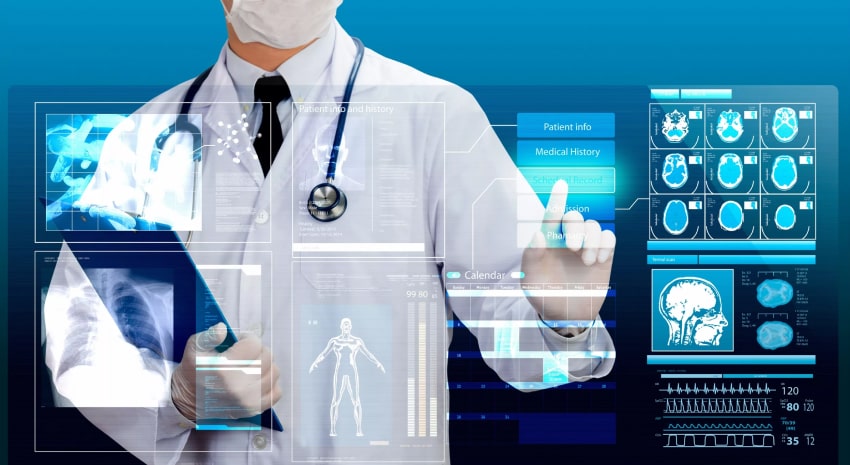
5. Computerized Physician Order Entry Systems
Have you ever tried to make sense of doctors’ handwritten prescriptions? Surprisingly, it seems that all of them learn how to do this in a chicken-scratch style. While e-prescribing is conquering the hearts of all stakeholders, there are still many cases where providers use pen and paper.
Computerized Physician Order Entry (CPOE), also known as Computerized Provider Order Entry, is a system supporting a provider with the tools to electronically insert, prescribe and store medication data instead of doing this manually.
In addition to clarity, CPOE enhances the efficiency of patient-care management. That is achieved by proper data input and its accurate distribution between clinics, pharmacies, and other parts engaged in this stage of care.
This system has a prosperous future as it augments transparency in data sharing. First of all, CPOE facilitates the medication order entry and fill process. It also results in the mitigation of prescription errors. Add to this reduced turnaround time for lab tests and a decrease in length of stay, and you will have an extra reason for applying this solution.
6. Streamlined Diagnostics
As long as some interactions remain invisible for patients, they generally result in better treatment outcomes. The Store and Forward approach allows providers to interact efficiently with each other and pass medical records to eliminate poor medication risks and reduce duplicate testing.
This approach adds more flexibility to communications and gives leeway to the process of decision-making. Finally, when integrated with EHR solutions, telemedicine facilitates workflows and reduces data overload, delivering effective care for patients.
Takeaways
Healthcare consumerization is invariably affected by technologies and benefits they entail. Its influence is bound to increase exponentially. It brings innovation to the healthcare industry and a lot of excitement for patients and, by the same token, for providers.
Keeping up with patients’ expectations is the key point for your success. Scheduling software, RPM systems, or online consultations are the solutions to streamline access to healthcare and make it more affordable and personalized.
It is the right time to enhance your patient care delivery and contact Velvetech. Our team of professionals will be happy to assist you with value-driven healthcare development and guide you through the custom eHealth solutions to choose the best for your business.










